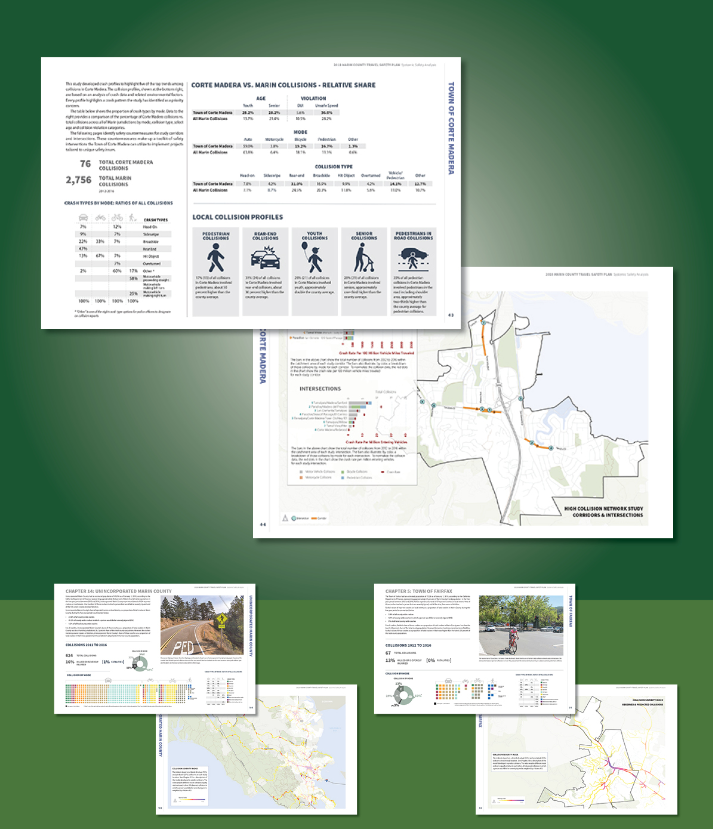California’s Systemic Safety Program
Proactive and Data-Driven Safety Planning
The systemic approach to safety mandates those responsible for roadway safety do not wait for a crash to occur in order to take action. By employing a systemic approach to safety, local jurisdictions recognize crashes alone are not always enough to identify and prioritize relevant safety projects. In addition to responding to collision hot spots, jurisdictions using a systemic approach can be proactive in identifying high-risk locations and intervening before crashes occur.
Systemic Safety Plans are Gaining Traction
Systemic safety plans are gaining traction as more cities make commitments to tackling roadway safety in an equitable, holistic, and data-driven manner through the development of Local Roadway Safety Plans (LRSPs) and Vision Zero Action Plans. With a new understanding of risk factors and the countermeasures that can be effective in mitigating those risks, agencies are now undertaking the challenges of how to fund, design, implement, and evaluate the effectiveness of systemic safety projects.
The California-funded Systemic Safety Analysis Report Program (SSARP) was established in 2016 to assist local agencies in performing a collision analysis, identifying safety issues on their roadway networks, and developing a list of systemic low-cost countermeasures that may be used to prepare future Highway Safety Improvement Programs (HSIPs) and other safety program applications.
Our SSAR Experience
We partner with local agencies throughout California to apply the systemic approach through developing Systemic Safety Analysis Reports (SSAR). These plans are funded by Caltrans to help cities and counties use a systemic lens to prioritize high-crash and high-risk locations for interventions through projects funded by the Highway Safety Improvement Program (HSIP). Jurisdictions we partner with include the following:
Alameda County
City of Woodland
City of Lancaster
City of Modesto
City of Montclair
Marin County
City of Sunnyvale
City of Moreno Valley
Orange County Transportation Authority
Key Steps in the SSAR Process
Use historic collision data and contextual roadway and land use information to identify risk factors leading to the most severe collisions.
Pair risk factors with countermeasures shown by research to have been effective in collision reduction.
Develop projects with high benefit/cost ratios that can successfully compete for Highway Safety Improvement Program funding.
Emphasize a systemic approach to include locations that have a history of collisions and exhibit similar risk factors, yet would not perform well in the HSIP process alone.
While the Systemic Safety Analysis Report Program has been successful in helping jurisdictions identify engineering projects that can be funded through HSIP, there are opportunities for jurisdictions throughout California to follow the lead of Vision Zero cities and expand the systemic approach beyond an engineering focus. Fehr & Peers is helping many agencies do just that. One such opportunity is the current Local Roadway Safety Plan (LRSP) program administered by Caltrans. Click here to learn more about LRSPs.
Learn more by contacting one of our industry experts.
Quick Links
© 2017 – 2024 Fehr & Peers. All rights reserved.


